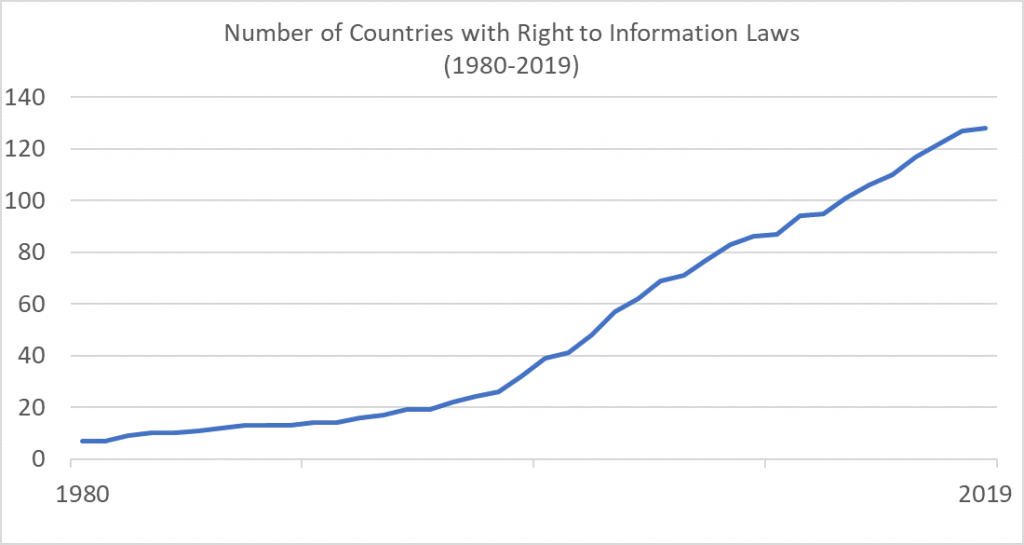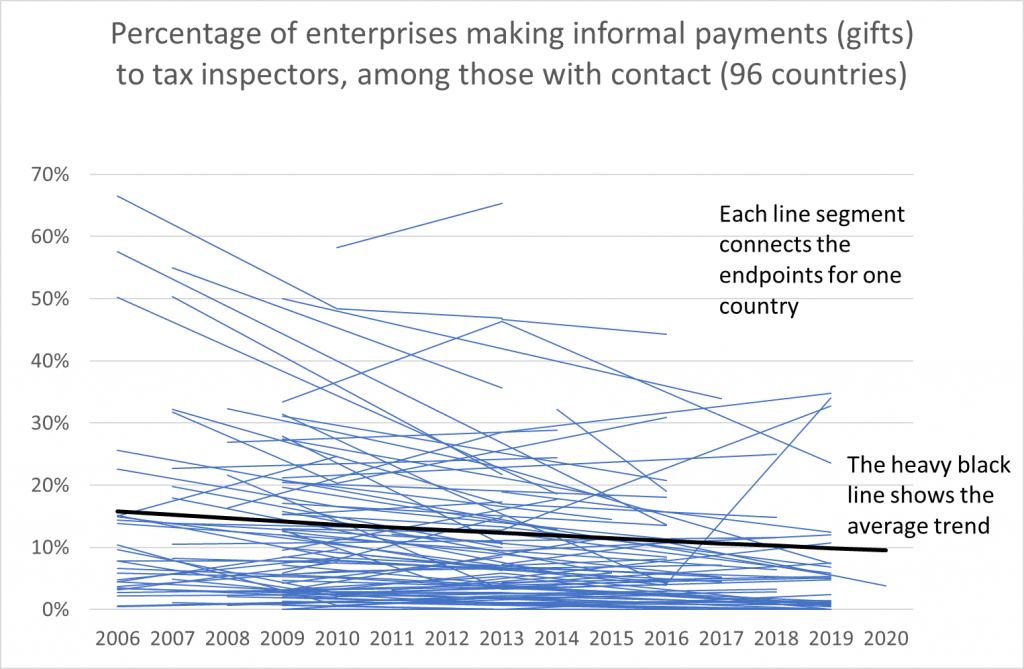What can we learn from trends in corruption and anticorruption?
There is general agreement that corruption is harmful, undermining investment and exacerbating poverty, but can anything really be done about it? The World Bank report launched last month, Enhancing Government Effectiveness and Transparency: The Fight Against Corruption, shows through detailed case studies of the application of various tools and sector approaches that curbing corruption is possible. Twenty-four years after the cancer of corruption speech, how has the discourse on corruption evolved?
The report finds measurable progress in implementing the policies and institutions designed to control corruption. The move toward openness and greater public access to government-held information is clear: The number of countries adopting right to information laws has expanded, and the quality of those laws has also improved, and technology has made access even easier. International standards are being strengthened for transparency in a range of areas, from extractive industries to regulatory processes.

Source: Author's calculations based on data from https://www.rti-rating.org.
Accountability systems are also stronger. Income and asset declarations by public officials are more prevalent, and more often the information is open to the public, than in the past, and many countries use electronic systems for declaration and verification. Technological advances are helping strengthen public financial management, limit the prevalence of ghost workers, improve monitoring of infrastructure projects, and strengthen transparency and efficiency of public procurement.
Our understanding of corruption has also advanced. Many issues continue to be vigorously debated, but some measure of international consensus is also apparent, reflected in the adoption of the UNCAC, more vigorous enforcement of foreign bribery laws, and greater recognition of the need to strengthen beneficial ownership transparency.
But have these improvements translated into lower levels of corruption?
This is a trickier question, both because of the nature of corruption and because there can be different trends for different forms of corruption. Yet, understanding the trends is essential for designing effective programs.
Despite the common view that there is an abundance of cross-country measures of corruption, very few are well-suited for this task. The report eschews expert assessments, which may be subject to various biases, as well as surveys that focus on perceptions of some generalized notion of corruption or perceptions of trends. While it is helpful to understand perceptions of corruption, it is also important to track actual experiences. The report focuses on contemporaneous reports of behaviors associated with “corruption.”
Among those that collect information on experiences in a systematic way that allows comparisons over time is the World Bank’s Enterprise Surveys (WBES). These surveys cover a broad range of topics, and great care is taken to ensure robust sampling. Due to the time and expense of surveying firms–good data doesn’t come cheap—the WBES is implemented periodically, but not for every country every year.
As of this summer, 96 countries have been surveyed at least twice since 2006 when the WBES approach was harmonized. The questions most useful for understanding corruption trends examined the prevalence of informal payments (including “gifts”) related to taxes and procurement. In both cases, the average trend was in the right direction. In most countries there were also fewer firms saying that corruption was a major problem for doing business.

Source: Author’s analysis based on data from https://www.enterprisesurveys.org.
The trends only reflect the transactional administrative corruption amenable to survey measurement. State capture, large-scale embezzlement, and sophisticated networks are not reflected. Nevertheless, the indication of some progress is heartening.
Corruption, though, continues to be a formidable problem. Even if the average trend in reducing administrative corruption has been in the right direction, it is not universal. One third of the countries in the figure above had increases in the percentage of firms that reported experiencing corruption. Efforts to strengthen the policies and institutions that control corruption are often met by unethical officials and businesspeople trying to get around those rules, and massive corruption scandals continue to make headlines.
The urgency of the response to COVID-19 exacerbates these challenges even further. Positive trends in transparency and openness are at risk of being undermined by emergency decrees. Even before COVID-19, there were growing concerns about shrinking space for civil society and the menace of state capture in many countries. Positive trends in controlling some forms of corruption are at risk of reversing as oversight is weakened and corruption risks evolve.
Still, knowing that anticorruption reforms can lead to results is encouraging and shows the usefulness of looking deeper, as the case studies in the volume do. (See the posts on open government approaches and customs.) As the cases focus on specific country examples, they can help reformers from government and civil society focus on the aspects of anticorruption most pertinent to them. The report is, in this sense, modular.
There is a risk that focusing on successful cases will lead some to naively mimic those approaches, with scant attention to the context that made that approach successful in the first place. The case studies sought to explain why a given approach worked or didn’t, not to sell that approach for any context. While the study is modular, it is not a menu.
Corruption continues to be a serious impediment to progress and fairness in many countries but there are things that can be done about it and, yes, in many countries, this is making a difference.
Editor’s Note: This blog is part of a series that helps unpack our new global report, Enhancing Government Effectiveness and Transparency: The Fight Against Corruption.
